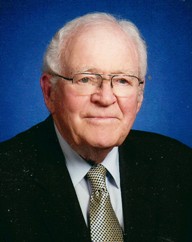MAR 19, 2013 ROTARY IN REVIEW:
Dr. Ramaiah Muthyala
Acting President, and former President, Tom Farnham called Saint Paul Rotary to order with his usual gusto.
Jerry Faletti and Doug Hartford did their usually good rendition of AMERICA THE BEAUTIFUL, followed by Steve Nyhus’ thoughtful and timely reading of new Pope Francis I on protection – of people, of nature, of beauty – all that makes life rich and wonderful.
Trixie Golberg introduced guests cordially.
Special note: Bob Jones fell and broke his ankle. A fast recovery, please, Bob.
Tom recognized all our March birthday men and women who received lively applause.
Clyde Nelson gave us an interim report on sign-ups for our April 27 and 28 food bagging for FEED MY STARVING CHILDREN. Some time slots are filling nicely (9:30, Saturday, for example) but others are lagging. Members are encouraged to sign up promptly and prepare to help meet our large goal of 150,000 processed meals during that two-day weekend. We are pleased that Camp Ryla young people (about 100 of them) will help out on Sunday morning. This whole annual effort to help hungry people around the globe is a Saint Paul Rotary high priority.
Trixie did her usual nice job of coaxing some Happy Dollars from several members for the Saint Paul Rotary Foundation.
Program Director John Guthmann, reeled off many of the academic and medical achievements of Professor and Doctor Ramaiah Muthyala, our speaker for the day. He has earned degrees from several eminent educational institutions in the United States, his native India, and the United Kingdom. His principal engagement is helping people with the so-called Orphan Diseases – little known diseases that affect millions around the globe. He is now the director of the Foundation for Rare Diseases. For years little attention was given to these less known diseases, but the US Congress in 1963 passed a law identifying such diseases as well within the scope of medical research and funding. Professor Murthyala showed a number of rare but well known illnesses to most Rotarians, such as Sickle Cell Anemia, ALS, and multiple sclerosis. Then he listed many others not nearly so identifiable. He showed a slide that identified the varying costs of per person treatment in several different diseases. West Nile Disease, for example, has received a great deal of federal funding whereas may others received less attention. He also raised the question, without answering it, of some diseases (AIDS-HIV, for example) have received great attention and funding while others don’t have champions. There is at times a political factor in which rare diseases receive the most attention. There is a moral factor imbedded in some decisions as to why some are treated less fully and others are now.
Professor Muthyala also commented on ethnic diseases. There are many illnesses that are frequently in one ethnic group but not in others. A high priority is to identify these “heritage diseases.”
Professor Muthyala stirred us up with new information. He called attention to Orphan Diseases many of which we had not heard of. And he concluded that in virtually all cases, we could do something. It may not be enough, but nonetheless any effort has its own value.
 As a personal note, this scribe found this to be one of the most unusual programs we have had in Rotary and opened up our understanding of the critical importance of little known diseases and how they may be combated.
As a personal note, this scribe found this to be one of the most unusual programs we have had in Rotary and opened up our understanding of the critical importance of little known diseases and how they may be combated.
Malcolm McLean, Scribe

